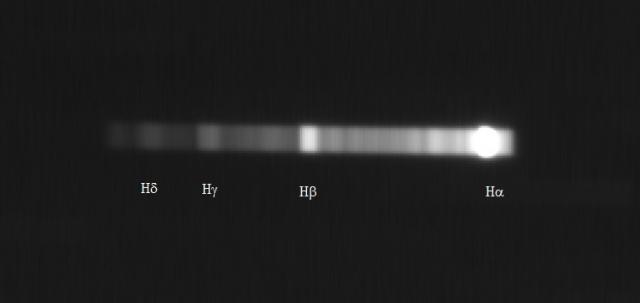Forum Replies Created
-
AuthorPosts
-
 Mike HarlowSpectator
Mike HarlowSpectatorATel#16808 now has a spectrum.
Mike. Mike HarlowSpectator
Mike HarlowSpectatorThat’s great. Looking forward to seeing the results…?
Mike Mike HarlowSpectator
Mike HarlowSpectatorMaybe the BAA should collaborate with the 2SPOT team so we can get spectra of this and other southern novae…?
Mike.
-
This reply was modified 1 year, 3 months ago by
 Mike Harlow.
Mike Harlow.
 Mike HarlowSpectator
Mike HarlowSpectatorClyde Fosters Mars images at: https://www.kwasan.kyoto-u.ac.jp/~cmo/cmons/2024/index_CFs.html
Click on the longitude to display that days images.-
This reply was modified 1 year, 3 months ago by
 Mike Harlow.
Mike Harlow.
 Mike HarlowSpectator
Mike HarlowSpectatorGrabbed a quick image soon after reading your post. On my members page at: https://britastro.org/observations/observation.php?id=20240731_135808_85400732e67d812d
Mike.
 Mike HarlowSpectator
Mike HarlowSpectatorThanks Gary,
I imaged it again this morning and as you say it is fading very rapidly. Comparison image attached. Each field is 14 x 14 arc minutes, north up, through a red filter using iTelescope T5-
This reply was modified 1 year, 4 months ago by
 Mike Harlow.
Mike Harlow.
Attachments:
 Mike HarlowSpectator
Mike HarlowSpectatorTook an image this morning using iTelescope. Looks more like mag 14.5 through the red filter used.
Image in the members gallery at: https://britastro.org/observations/observation.php?id=20240729_072219_3fa14af2888e7f59
I would be interested to see your SLOOH image.
Mike. Mike HarlowSpectator
Mike HarlowSpectatorThis all-sky view does show R Lyr as significantly brighter than the blue stars beta and gamma Lyr which are listed as a magnitude brighter. I guess a meteor camera is even more red sensitive.
Do you have an image you could share?
Mike.Attachments:
 Mike HarlowSpectator
Mike HarlowSpectatorJust a small correction. In the all sky image on page 6 the cross marks the centre of the field NOT T CrB. Corona Borealis is at the top of the image, easy enough to find starting from Arcturus…
Mike. Mike HarlowSpectator
Mike HarlowSpectatorBut ‘Astronomy Now’ are advertising the 2004 BAA Deep Sky section annual meeting…!!! It must have been a good one.
Astronomy Now, February 2024 page. 69. Mike HarlowSpectator
Mike HarlowSpectatorHi John,
I’ve had this problem before as well. Upload an image, type in all the details, save and then…nothing, blank! I soon realised that, in my case anyway, it was that the image file exceeded the 2Mb limit. Reducing the file size below 2Mb solved the problem.
Hope that helps?
Mike. Mike HarlowSpectator
Mike HarlowSpectatorSo I can watch a video from 1972 but not 2023?!
 Mike HarlowSpectator
Mike HarlowSpectatorAre there videos of the talks so we can all enjoy them???
 Mike HarlowSpectator
Mike HarlowSpectatorNice piece on Spaceweather.com about this: https://www.spaceweather.com/archive.php?view=1&day=15&month=04&year=2023
So +/- 16 days from perihelion is the best time to image it.
Mike.-
This reply was modified 2 years, 7 months ago by
 Mike Harlow.
Mike Harlow.
 Mike HarlowSpectator
Mike HarlowSpectatorThanks Martin,
I thought it was a bit weird when the all-sky camera in New Mexico suddenly said it was in Utah Desert! But still looks like there is some commissioning work to do before we can start using them again.
Looking forward to seeing more of your comet images!
Mike.-
This reply was modified 2 years, 10 months ago by
 Mike Harlow.
Mike Harlow.
 Mike HarlowSpectator
Mike HarlowSpectatorThanks David,
I’ve now had a detailed reply from Mladen explaining the situation, so all is good. Looks like they will be back in action next week as you mention above.
Thanks,
Mike. Mike HarlowSpectator
Mike HarlowSpectatorJust had a quick look at the object through the objective prism and as Robin has shown above there are strong H alpha and beta emission lines.
 Mike HarlowSpectator
Mike HarlowSpectatorThanks for the info Robin, very interesting.
Looks like going back to silver is the best option for the UV!!!
Mike.
 Mike HarlowSpectator
Mike HarlowSpectatorHi Bill,
I had a Hi-Lux coating put on my 12 inch mirror by Orion Optics a few years ago and it is still in good condition. I haven’t examined it recent for pinholes but it still looks uniformly bright despite several years outside in the observatory. So I’m happy with it.
One thing that may be an issue is the reflectivity in the UV and IR, outside the ‘visible’ range. When doing spectroscopy I get the impression I’m not seeing as far into the UV or IR ends as I did when using just a plane old aluminium coating. I haven’t quantified this and it’s not really a significant problem but maybe something to investigate? I did contact Orion Optics to ask what the reflectivity was beyond their specified range of 400-700nm but the customer service person didn’t seem to understand the question(!).
Mike.
 Mike HarlowSpectator
Mike HarlowSpectatorYes, much fainter than I was hoping for but still bright enough for a low resolution spectrum:

Very broad hydrogen lines dominated by H alpha emission.
Mike.
[26cm, 3 degree objective prism on 30cm F/6.8 astrograph. 6 x 15 seconds at ~23:30BST 13th June 2021]
-
This reply was modified 1 year, 3 months ago by
-
AuthorPosts


